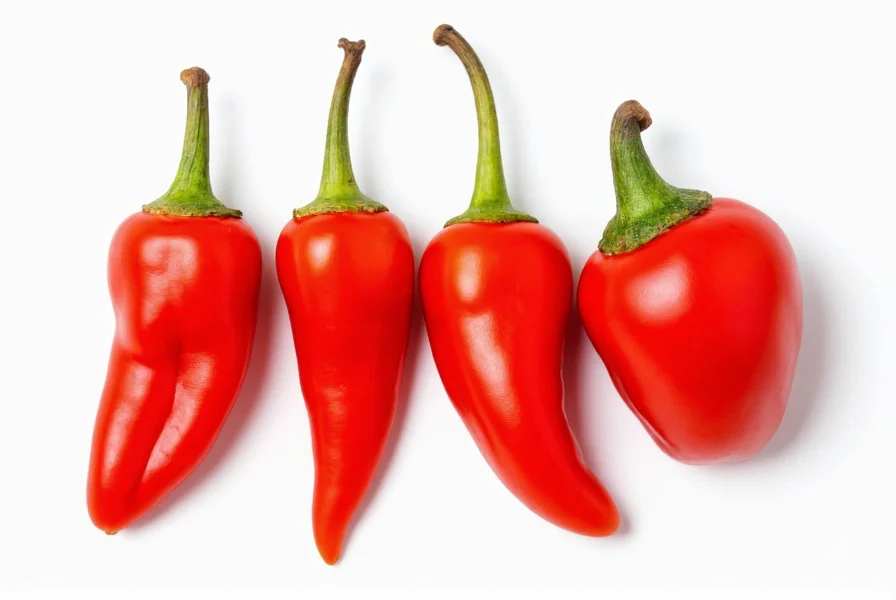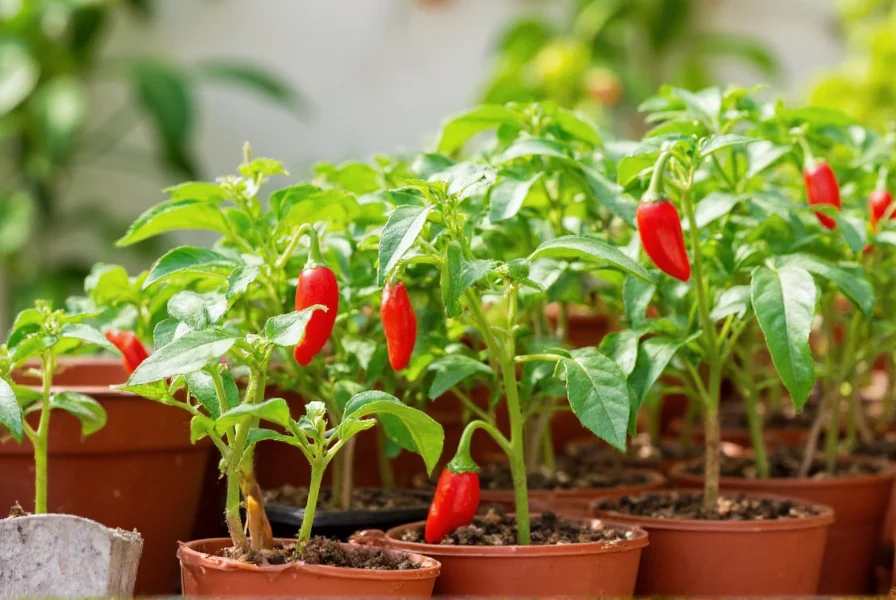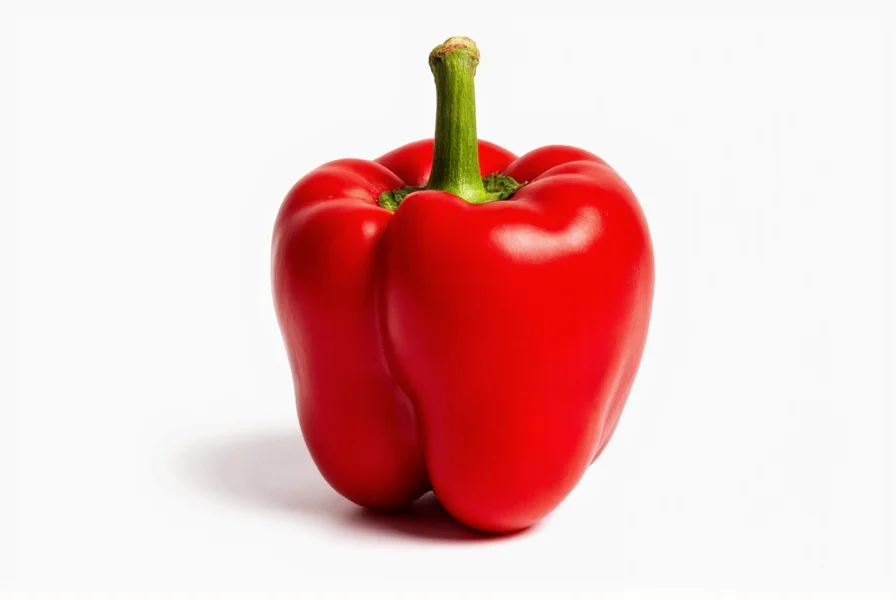When searching for small red pepper varieties, it's important to understand the distinct characteristics that differentiate these compact chili peppers. While often grouped together as "red pepper small," these chilies have unique flavor profiles, heat levels, and culinary applications that significantly impact how they should be used in cooking.
Common Small Red Pepper Varieties Explained
Understanding the specific types of small red peppers prevents culinary mishaps and helps you select the right pepper for your recipe. Here's a detailed comparison of the most frequently encountered varieties:
| Pepper Variety | Size (inches) | Scoville Range | Flavor Profile | Common Uses |
|---|---|---|---|---|
| Thai Bird's Eye Chili | 1-2 | 50,000-100,000+ SHU | Sharp, citrusy, floral | Thai curries, Vietnamese dipping sauces |
| Cayenne | 2-3 | 30,000-50,000 SHU | Earthy, slightly sweet | Cajun cuisine, hot sauces, spice blends |
| Pequín | 0.5-1 | 40,000-60,000 SHU | Smoky, nutty, complex | Mexican salsas, adobo sauces |
| Chiltepin | 0.2-0.8 | 50,000-100,000 SHU | Intense heat, smoky finish | Southwestern salsas, pickled condiments |
Identifying Small Red Pepper Types
Many home cooks struggle with identifying different small red pepper types at the grocery store or market. The key distinguishing factors include:
- Shape and curvature: Thai chilies grow upright on the plant and are straighter, while cayenne peppers hang downward and have a more curved shape
- Color variation: True Thai bird's eye chilies maintain a consistent bright red color when mature, whereas some pequín varieties may show color variations
- Stem characteristics: Pequín peppers have distinctive thin, delicate stems compared to the sturdier stems of cayenne varieties
- Heat progression: Thai chilies deliver immediate intense heat, while pequín peppers build heat more gradually with complex flavor notes

Culinary Applications of Small Red Peppers
Understanding how to use tiny red peppers in cooking properly can transform your dishes. Each variety brings unique qualities to different cuisines:
Thai bird's eye chilies work exceptionally well in Southeast Asian dishes where their intense heat and floral notes shine through without overwhelming delicate flavors. They're perfect for Thai green and red curries, Vietnamese dipping sauces (like nước chấm), and Malaysian sambals. When using these hottest small red peppers, remember that less is more—start with half a pepper and adjust to taste.
Pequín peppers, with their complex smoky-nutty flavor, excel in Mexican cuisine. They're traditionally used in adobo sauces, mole preparations, and salsas where their heat builds gradually, allowing other flavors to emerge. Unlike Thai chilies, pequín peppers can be toasted before use to enhance their natural smokiness—a technique that works particularly well for dried small red peppers.
Growing Small Red Peppers at Home
Many gardeners seek information about growing small red peppers at home because these compact plants work well in containers and small spaces. All small chili varieties require similar growing conditions:
- Full sun exposure (6-8 hours daily)
- Well-draining soil with pH between 6.0-7.0
- Consistent moisture without waterlogging
- Warm temperatures (70-85°F during day, not below 60°F at night)
Thai chilies and pequín peppers particularly thrive in container gardening, making them ideal for balconies or patios. Start seeds indoors 8-10 weeks before the last frost date, and transplant outdoors when nighttime temperatures consistently stay above 60°F. Most small pepper varieties will begin producing fruit 70-90 days after transplanting.

Nutritional Benefits of Small Red Peppers
Despite their diminutive size, nutritional benefits of small red peppers are substantial. All chili peppers contain capsaicin (responsible for heat) and high levels of vitamin C, but small varieties offer additional advantages:
- Extremely high vitamin C content—just one small red pepper provides over 100% of your daily requirement
- Rich in antioxidants like beta-carotene and lutein
- Contains capsaicinoids that may boost metabolism and reduce inflammation
- Negligible calories (about 4 calories per pepper) with no fat or cholesterol
Research suggests that the capsaicin in small red pepper heat level comparison varieties may offer particular health benefits, including pain relief, improved circulation, and potential weight management support. The smaller, hotter varieties generally contain higher concentrations of beneficial compounds.
Storage and Preservation Techniques
Proper storage extends the shelf life of your tiny red peppers for cooking. Here are the most effective methods:
- Refrigeration: Store unwashed peppers in a perforated plastic bag in the crisper drawer for 2-3 weeks
- Freezing: Freeze whole peppers on a baking sheet, then transfer to freezer bags for up to 6 months (no need to thaw before cooking)
- Drying: Air-dry or use a food dehydrator to create dried small red peppers that last 6-12 months
- Pickling: Preserve in vinegar with spices for 6-12 months of shelf-stable heat
Substitution Guide for Small Red Peppers
When you can't find the specific variety called for in a recipe, understanding small red pepper substitutes is crucial. Here's what works best:
- Thai bird's eye chili substitute: Use serrano peppers (use 2-3 serranos for every 5 Thai chilies) or a combination of cayenne and red jalapeño
- Pequín pepper substitute: Aleppo pepper (for flavor, though much milder) or a mix of cayenne and smoked paprika
- For authentic heat in Southeast Asian dishes: Don't substitute—seek out authentic Thai chilies at Asian markets
Remember that small red pepper heat level comparison matters most when substituting. Always start with less than you think you need and adjust gradually, as small peppers concentrate their heat in a tiny package.
Frequently Asked Questions
What's the difference between Thai chilies and pequín peppers?
Thai chilies (bird's eye) are typically 1-2 inches long with consistent bright red color, delivering immediate intense heat (50,000-100,000+ SHU) and citrusy flavor. Pequín peppers are smaller (0.5-1 inch), have a more complex smoky-nutty flavor profile, and build heat gradually (40,000-60,000 SHU). Thai chilies grow upright on plants while pequín peppers hang downward.
How can I reduce the heat of small red peppers in cooking?
To reduce heat from small red peppers, remove the seeds and white membranes (placenta) where most capsaicin concentrates. For Thai chilies, use only half or a quarter of the pepper initially. Cooking peppers in oil or fat helps distribute heat more evenly. Adding dairy (yogurt, coconut milk) or acid (lime juice, vinegar) can counteract excessive heat after cooking.
Can I grow small red peppers indoors year-round?
Yes, small red pepper varieties like Thai chilies and pequín peppers grow well indoors with proper conditions. They need 6-8 hours of direct sunlight or equivalent grow light exposure, temperatures between 70-85°F, and consistent moisture. Use a 2-3 gallon container with drainage holes, well-draining potting mix, and fertilize monthly during growing season. Indoor plants may need manual pollination for fruit production.
Why are some small red peppers hotter than others of the same variety?
Heat variation in small red peppers of the same variety occurs due to growing conditions. Stress factors like inconsistent watering, higher temperatures, and nutrient deficiencies increase capsaicin production. Peppers grown in optimal conditions with consistent moisture tend to be milder, while those experiencing mild stress produce more intense heat. The specific plant and position on the plant also affect heat levels.
How do I handle small red peppers safely without burning my skin?
Wear disposable gloves when handling hot small red peppers, especially when cutting or seeding. Avoid touching your face, especially eyes. If you get pepper juice on skin, wash immediately with soap and cold water (not hot, which opens pores). For persistent burning, use milk, yogurt, or oil to dissolve capsaicin, then wash with soap. Never use alcohol-based sanitizers first, as they spread the oil.











 浙公网安备
33010002000092号
浙公网安备
33010002000092号 浙B2-20120091-4
浙B2-20120091-4